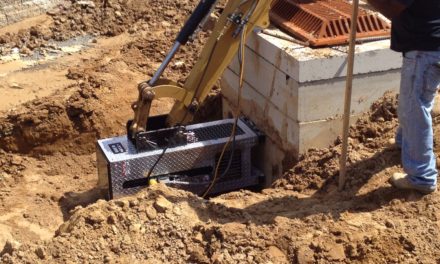
SILO SYSTEM STREAMLINES SLURRY PROCESSING AND DISPOSAL
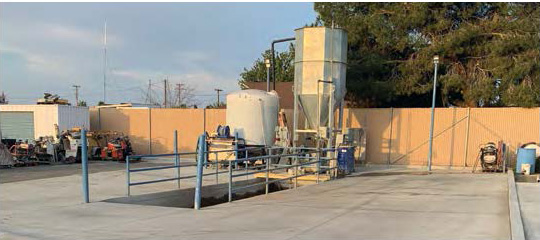
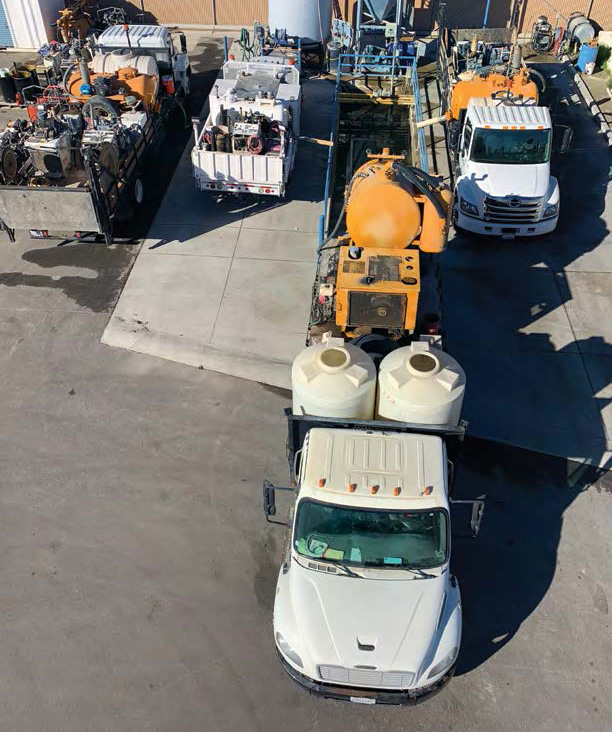

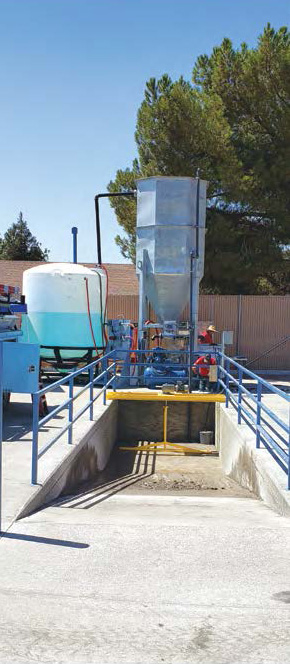
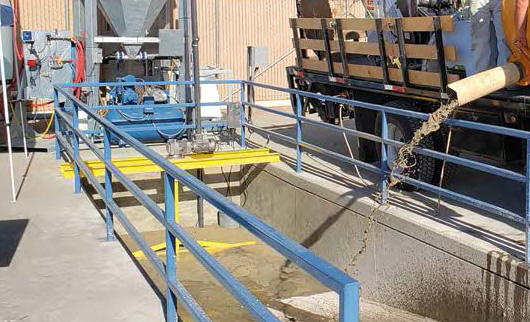
Since OSHA implemented the “Respirable Crystalline Silica Standard for Construction” in 2017, wet polishing for concrete surface prep has dramatically increased. Wet polishing minimizes respirable silica dust in the air as it is trapped by the water, and for the most part reduces the breathing hazard to workers. However, mixing the concrete and chemicals with the water creates slurry, which introduces a new hazard and additional step for concrete renovation workers.
Slurry management and disposal is a crucial element of virtually any jobsite with major penalties for improper handling. Whether it be the detrimental environmental risks or the potential U.S. Environmental Protection Agency (EPA) fines, which start at $10,000 for violating only one of their laws, slurry simply must be handled properly. You cannot discard slurry into a dumpster or sewer, making it especially challenging to deal with substantial amounts of slurry that result from large jobs. To legally dispose of the slurry, you must first separate it back into its two primary components: concrete and water.
Slurry silos, though relatively new, are being used widely in the concrete and stone industries. One example is the Decanting Silo by Full Circle Water, which uses gravity to separate the sludge and solids from water. The silo system automatically pumps mixed slurry from the pit up and into the silo for treatment. A flocculent is mixed in automatically at a very small dosage to promote settling of solids in the slurry stream. The concrete and stone fines fall towards the bottom cone as the water moves down and around the center feed tube. As the water rises over the vertical sidewalls, the smaller particles slowly settle out until the clarified water spills over the top output tray on its way to a collection tank where the clean, processed water is then stored in a tank and a re-pressurization system refills trucks at 40 gallons per minute with recycled water to reuse back out on the jobsite.
CSDA member Austin Enterprise out of Bakersfield, California wanted a more efficient and environmentally friendly solution to their slurry management. At their Bakersfield headquarters, they designed a sloped bottom slurry pit that would fit the decanting silo and allow three trucks to dump unprocessed slurry while allowing one truck to refill with the recycled water simultaneously. The silo can hold approximately 4,780 gallons of slurry with the ability to store 2,350 gallons of recycled fresh water in the tank. This eliminated their need to manage slurry on jobsites, and allows them to use their own recycled water and process and dispose of the slurry in-house.
To prepare for the Silo, they began by saw cutting to create a clean edge using a Meco 60D saw. Remaining unnecessary asphalt was broken and removed by a Bobcat with a hydraulic breaker attachment prior to grading the pit, and then fresh concrete was poured. The demolition included saw cutting and removing 3,375 square feet of existing asphalt to prepare for the slab and pit. The final dimensions of the slurry pit are 8’ x 35’ with the depth gradually sloping from the surface to a depth of 4.5’. Guard rails were designed, fabricated and installed along with pressure washers to each side of the pit for cleaning equipment after washout. Austin Enterprise then drilled 12-inch holes for pipe bollard installation to protect stationary equipment and other assets from vehicle intrusions. 12-inch holes were also drilled for the electrical conduits using a Diamond Products 4-Speed Core Drill.
Project manager, Ralph Ortega said about this project, “Safety is our number one concern on every jobsite, whether in the field as a subcontractor, or like in this case, at our own facility.” Daily job briefings and debriefs were performed to include any safety hazards or specialty PPE that was needed beyond the standard PPE always worn by employees. Any affected personnel were notified of changes to plans or new hazards that existed from SIMOPs. Austin Enterprise was thrilled to complete this project safely and begin using this new system.
Austin Enterprise Owner, Ty Conner, said this silo system is ahead of the curve for the company and State of California’s environmental requirements. The silo system has drastically transformed the company’s slurry disposal process while meeting all their recycling needs. The ability to process the slurry internally and reuse and recycle the slurry water creates a reduction in wastewater and eliminates wastewater discharge compliance issues. It is far better for the environment, especially being in Southern California, where fresh water is often in short supply. The silo has also lowered their operating costs due to the ease of disposal.
As technology advances, it is important to make sure that your company is utilizing the best machinery and techniques to stay competitive within this constantly evolving field. Optimizing your business to be more time-efficient while also being more environmentally friendly is a win-win for everyone involved, and CSDA is always advocating for members to make meaningful changes like this, even if they are small and simple.
COMPANY PROFILE
Austin Enterprise is headquartered in Bakersfield, California and was established in 1992. They have a fleet of 47 trucks and 50 employees. The services they offer include flat sawing, core drilling, hand sawing, wall sawing, wire sawing, grinding, loop sawing, pavement sawing and sealing, crack sealing, bridge joint installation, floor grinding, curb cutting, slots for recess markers and striping, demolition, rock drilling and dowel drilling. They have been a CSDA member since 2011.
RESOURCES
CSDA Contractor
Austin Enterprise
Contact for Story: Ralph Ortega
Email: Sales@austin-enterprise.com
Tel: 661-589-1001
Website: www.austin-enterprise.com
Methods Used
Saw Cutting, Core Drilling












